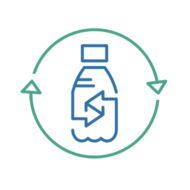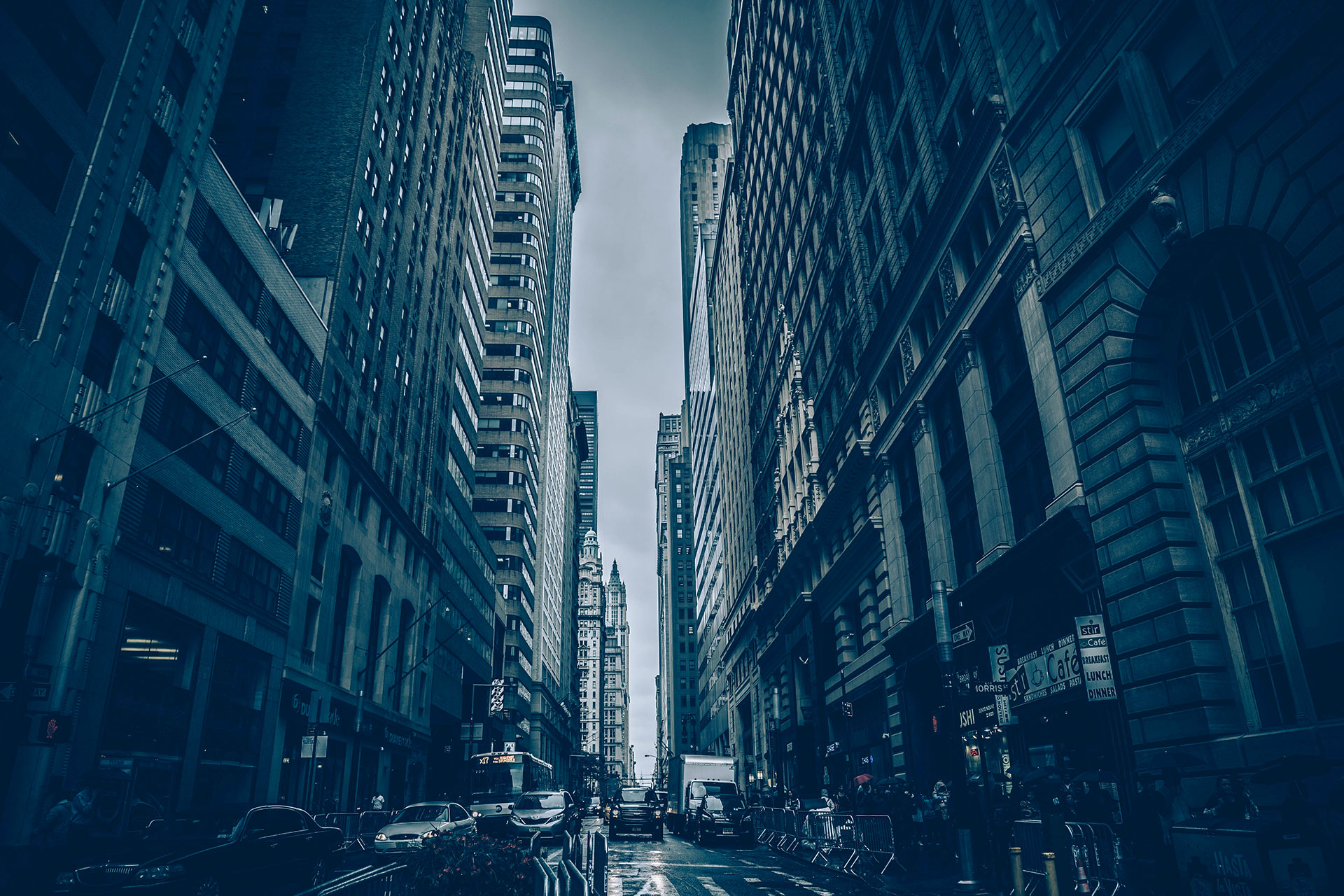Reducing Plastic Pollution
These days, it seems like plastic is everywhere you look. It’s packaging your food, holding your groceries, conveniently providing water for you, wrapping your uneaten food, filling your bathroom, housing your cleaning products; truly pervading every aspect of daily life.
Yet unlike food, wood, or any other organic materials we use in day to day life, plastic is not biodegradable – meaning it can’t be eaten and decomposed by other organisms. In fact, many plastics aren’t even degradable. And those that are degradable merely break into smaller and smaller pieces, leaching chemicals and toxins into the environment and the organisms around it.
Because it takes even the most easily degradable and common plastics between 10 and 1,000 years to decompose, plastics are building up to an unmanageable amount. We are finding traces of plastic pollution in rivers, oceans, beaches, and even in animals and soils.
It is yet unknown how human consumption of plastic toxins affect our health, but studies have found plastics in our seafood and the domestic animals brought in for slaughter.
Research has also been conducted by clean up crews, such as the Ocean Conservancy, to document the most common culprits of plastic pollution found in the ocean and on beaches. Because of organizations such as this, we are beginning to better understand common pollutants and how to manage them.
The top ten most common plastic items found during the international coastal cleanup this year include (2018):
- Cigarette butts (2,412,151)
- Food wrappers (1,739,743)
- Plastic beverage bottles (1,569,135)
- Plastic bottle caps (1,091,107)
- Plastic grocery bags (757,523)
- Other plastic bags (746,211)
- Straws (643,562)
- Plastic take out containers (632,874)
- Plastic lids (624,878)
- Styrofoam take out containers (580,570)
Some of the biggest offenders of plastic pollution include plastic bags, take out containers, plastic bottles, straws, and disposable coffee mugs.
What is both unfortunate and hopeful is that almost all the items that make up these lists are single use plastics. These are items that are only used briefly for one purpose before being discarded. Fortunately though, due to their disposable nature, many of these items can not only be replaced, but avoided altogether.
Plastic Bags
On average, a plastic bag is only used for 12 minutes. And because they are so readily available, convenient, and easily discarded, we use on average about 500 billion to 1 trillion plastic bags a year, worldwide.
However, reducing plastic bag consumption can be simple and fairly easy. There are many things you can do to limit or stop your plastic bag use completely.
- Decline the option for a plastic bag when your items are easy to carry.
- Purchase your own reusable bag and bring it with you when you go shopping.
- Use paper bags instead of plastic when they’re available.
- Start using reusable produce bags to carry your produce, rather than the thin plastic bags provided.
- Recycle and reuse the plastic bags that you do acquire.
As you begin to transition to more sustainable options like cotton or jute bags, backpacks, or reusable plastic bags, then your perspective on plastic will shift. Instead of seeing it as an integral part of daily life, you’ll start to see it as superfluous.
Plastic Packaging
Another major offender of plastic pollution is plastic packaging (‘Other Plastic Bags’). This can range from the bags your food is packaged in, the plastic bottles your cleaning products come in, the plastic your clothes or household items are packaged in, and even your bin bags.
There are many ways to avoid this group of plastics. One is to buy in bulk at the grocery store—storing dried goods in glass jars or durable plastic storage, rather than single-use plastic.
There are entire grocery stores being established that are dedicated to plastic-free packaging.
Another is to make your own cleaning products or buy products packaged in cardboard instead of plastic. Using biodegradable bin bags is another more eco-friendly option to replace traditional plastic trash bags. Transitioning to newspaper liners is also an option.
Plastic Straws
The plastic straw movement is gaining momentum around the world and continues to be at the forefront of sustainable transitions. Last year, the Ocean Conservancy found enough straws in their beach clean up to reach the height of over 10,000 palm trees.
McDonald’s announced their transition to paper straws in the UK and Ireland earlier this year. There are many other companies looking to change their policies on plastic straws in the coming years.
One of the easiest ways to reduce plastic straw pollution and to advocate for better options is to simply say no. Whether you’re ordering a cocktail at the bar or an iced coffee at your local Starbucks, decline the option for a straw.
Another way to enact change is to inquire about paper or metal straws at your local eatery. Show your favorite establishments that you’d like to see more sustainable options.
Plastic Beverage Bottles and Disposable Cups
More than 480 billion plastic water bottles were sold in 2016, and this number is expected to grow to 583.3 billion by 2021 if things do not change.
Disposable coffee cups, which are not only lined with plastic and therefore neither recyclable nor biodegradable, use over 20 million trees to meet the need of consumers each year. It is estimated that the US alone uses over 50 billion of these coffee cups each year.
The most economical and sustainable solution to disposable beverage bottles is to switch to a reusable one. Find yourself the perfect reusable water bottle or coffee mug to bring with you in your car, on the way to work, while exercising, or what ever the occasion.
Another way to reduce plastic water bottles is to reuse or recycle them. While not purchasing one in the first place is the best solution, if the situation cannot be avoided, recycling is the next best option.
Take Out Containers and Packaging
Take out containers also make up a significant portion of plastic pollution. Between plastic and Styrofoam containers, take out packaging is one of the top 10 items that pollute our beaches and waterways. And this does not include the plastic cutlery and/or plastic bags that typically accompany take out orders.
So what can you do to avoid this?
Decline any extra plastic ware with your food – bring your own cutlery, or use your own at home. Another great option is to skip the bag and carry the containers in your hands. Ask your favorite establishment if they can start carrying biodegradable take out containers. And finally, if you’re dining out, bring your own tupperware to place leftovers in!
Take a Stand
Individual actions are critical in the fight against plastic pollution. But individual actions alone will not be enough. It is also important to take a stand and work to effect local and national policy change. The two most important components of policy change include bans and taxes.
Bans on certain plastics have proven to be some of the most effective plastic pollution management solutions around the world. In California, where a plastic bag ban has been in effect since 2011, there has been an 89 percent reduction in plastic storm drain litter and 59 percent reduction in city streets and neighborhoods.
In Ireland, there has been a 95 percent reduction in plastic litter since their ban in 2002.
In Kenya, where one of the most drastic plastic bag bans went into effect last year, The Guardian reported a reduction in plastic the stomachs of animals for slaughter from 3 in 10 to 1 in 10.
In terms of clean up, plastic pollution is estimated to cost an estimated $13 billion each year, according to the UN Environment Program. When it comes to the natural capital cost of plastic use – including financial impacts from pollution issues – UNEP estimates the cost at $75 billion. This number can be reduced with effective disposal programs and proper plastic waste management, reducing costs to communities and the environment.
There are innumerable ways to reduce the plastic pollution that you create as an individual and to promote change within your community. While plastic pollution may seem like an unattainable problem to tackle, both individual action and the promotion of government and corporate cooperation will begin to curb the growing problem of plastic pollution worldwide.



